















|
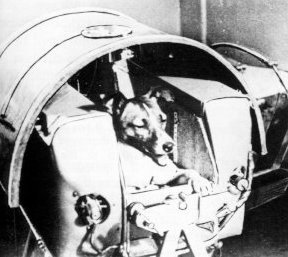 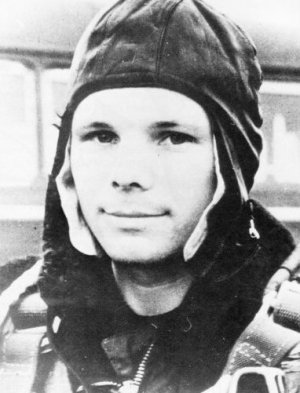
|
| The Russians were ahead. A month after the 184-pound Sputnik I, they sent up the dog Laika (above left) in the 1120-pound Sputnik II. Three years later, on April 12, 1961, Yuri Gagarin (above right and below) became the first man to orbit the Earth. His Vostok I's payload was 10,417 pounds and his flight lasted 108 minutes. At this time, the United States was in the final stage of preparing for its first manned suborbital flight, on May 5, 1961. The physical hazards of weightlessness were then almost wholly unknown. |
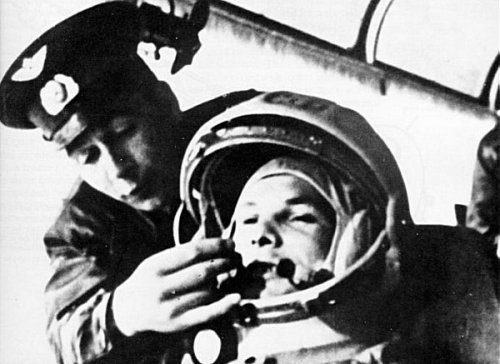
|
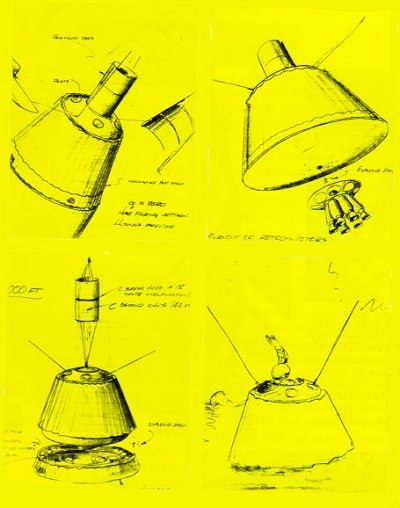
| Engineers brainstormed many ideas. These sketches illustrate some of them. In the upper left a spacecraft is shown still attached to its booster. It has jettisoned nose fairings and deployed its antenna. The drawing to the right of it shows the jettisoning of spent retrorockets as the spacecraft reenters the atmosphere. For reentry the blunt end is pointed in the direction of travel, thus serving as a heat shield. In the lower left sketch the heat shield is jettisoned just before splashdown. The final sketch shows the spacecraft floating safely in the water as an astronaut waves to the recovery team. Caldwell C. Johnson sketched these concepts in May 1958. |
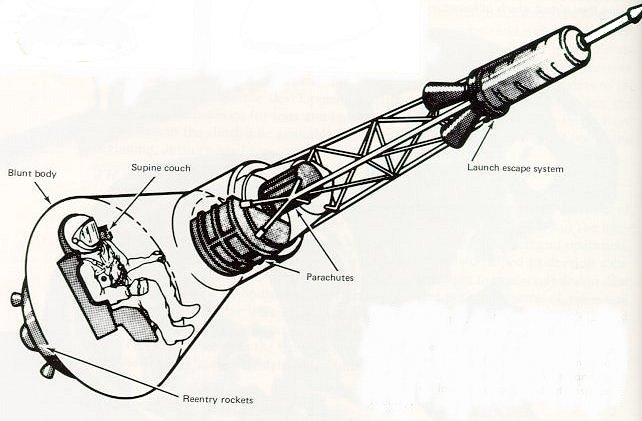
|
| Tests, redesigns, and more tests led to this basic configuration for manned spaceflight. A special escape system would pull the man from an exploding booster. Lying on a tailored couch, he would best withstand the g-loads of launch, abort, and atmospheric reentry. |
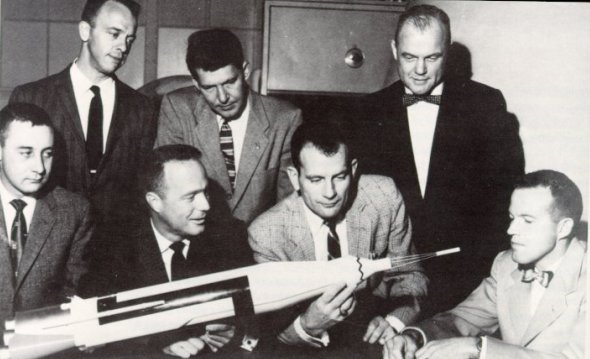
|
| The first seven American astronauts, chosen in April 1 959, were (from left, seated) Virgil I. Grissom, M. Scott Carpenter, Donald K. Slayton, and L. Gordon Cooper, Jr.; (standing) Alan B. Shepard, Jr., Walter M. Schirra, and John H. Glenn, Jr. They were test pilots who volunteered to fly a spacecraft -similar to the model shown- that had not yet been built. |
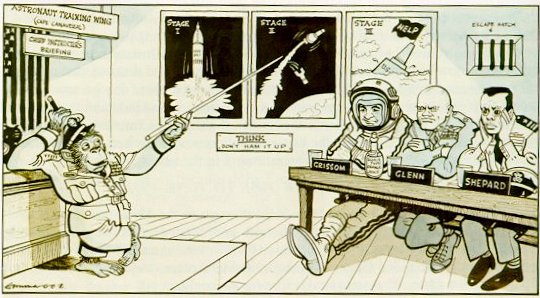
|
|
"Then, at 900.000 feet, you'll get the feeling that you must have a banana." (From Daily Mail, 23rd February 1960) Animals flew first, paving the way for man. Chimpanzees were physiologically manlike and easily trained. The Air Force's Aeromedical Field Laboratory provided them. |
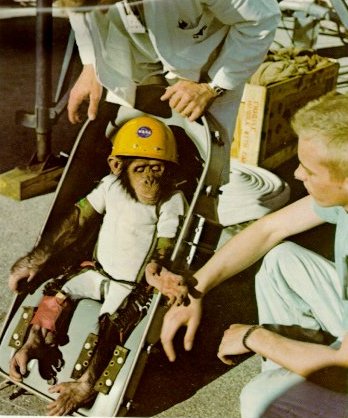
| Custom-made couches were provided for the chimpanzees before their flights. Sensors attached to the animals and instruments in the spacecraft greatly reduced uncertainty about the effects of severe g-loads an the body of an astronaut. This medical research resulted in the design of a couch for the Mercury capsule that would distribute the occupant's weight and minimize acceleration loads on his body. |
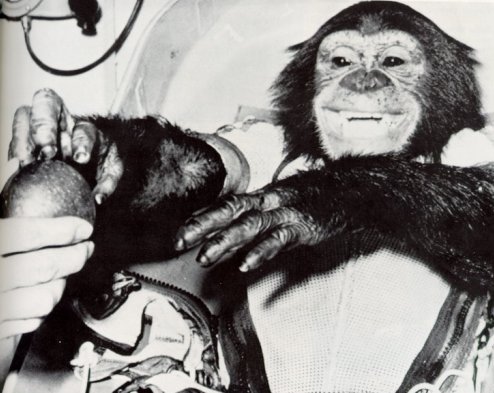
|
| A chimpanzee named Ham, shown hamming it up in the photo below, was "a delightful little fellow". The Mercury-Redstone 2 that carried Ham into space January 31, 1961, over-accelerated and ascended to a higher altitude than planned. Nonetheless, the capsule was recovered with Ham in good shape. He was then retired to a normal lifetime. Mercury researchers, remembering Ham fondly, occasionally visited him afterward. |


